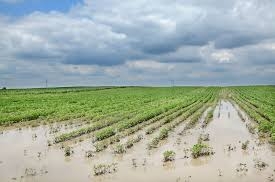Rainfall forecasts in Argentina and Brazil remain the main factors influencing soybean and corn markets

South America and Europe are experiencing uneven rainfall, causing excess moisture in some regions and drought in others. Argentina has received rains that will continue into next week and improve the condition of crops. In Brazil, heavy rains are delaying the soybean and corn harvest, leading to higher quotes.
Despite a slight decrease in rainfall intensity in Brazil , a new wave of downpours will begin next week, making harvesting difficult. High humidity levels will reduce yield potential and reduce soybean quality due to seed germination. In southern Brazil, rainfall is below normal, which also reduces the potential for corn and soybean harvests.
According to Safras&Mercado, as of January 24, in Brazil, the first crop of corn was harvested on 10.3% of the planned 3.512 million hectares (8.4% last year and 8.7% on average over 5 years), and soybeans - only 4% (9% last year), which may lead to a delay in sowing the second crop of corn.
Some regions of Argentina have seen some light rain this week, but temperatures have again topped 30°C by the end of the week, further worsening crop conditions, especially in the central and eastern regions of the country. Several spells of rain are forecast for next week, but they will not be enough to address the moisture deficit, especially during the critical growing season for soybeans and corn.
In the Midwest and Plains of the USA, after a cold cyclone, warm weather has set in with light precipitation, which replenishes moisture reserves in winter crops, and next week temperatures will rise to +5..+10°C. In the Central and Southern Plains, rains will be heavier, and in the Northern Plains and the Canadian prairies, the front will bring frost and light precipitation.
Excessive rains and storms continue in Southwestern Europe , but the situation remains difficult in the Southeast, where winter wheat crops need moisture.
In Ukraine, the deficit of precipitation is increasing, but thanks to positive temperatures, the soil does not lose moisture. In the next 7-10 days, a decrease in temperatures and a lack of precipitation are expected, which will continue to reduce moisture reserves in the upper soil layer, negatively affecting crops.
In the Russian Federation, after the rains, the soil was well saturated with moisture, and high temperatures in the southwest improved the condition of crops. Currently, about 81% of winter crop crops are in satisfactory and good condition, and weather conditions are conducive to their development.


